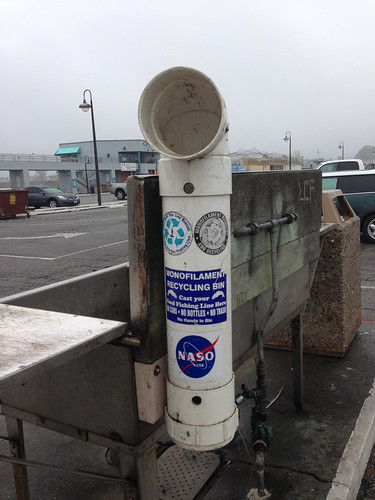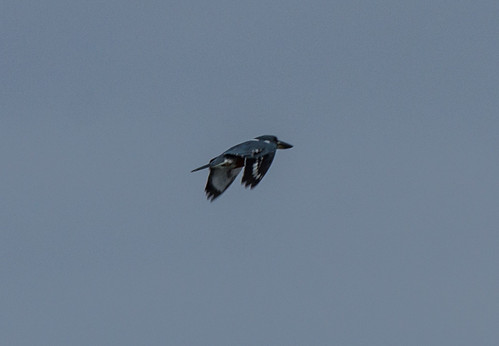(Yet another radio program transcript that elicited at least one angry call from a listener complaining that I got political. These people don't contact me, and never seem to find errors in what I report. They just don't think bird stories should ever have a political point of view, even when about birds that are in serious jeopardy because of a political issue, and so want to remove my voice from the airwaves.)

Last week, one of my favorite birding places made the news. Anzalduas Park, a friendly little gem right along the Rio Grande River, was used for a press conference to highlight what some call the "crisis" of illegal immigration.
I spent my birthday morning there in 2013 when I was doing my Big Year. By then the number of undocumented immigrants coming over our southern border was already much lower than it had been at the peak, during the Clinton administration. In recent years, that number includes more refugee families from Central America than other undocumented people, too; refugees almost always immediately report to authorities because they're seeking asylum.
 |
| From The New York Times |
As a woman traveling and birding alone, I stay alert to danger, but despite all the time I spent birding along the border that very year, in Texas, New Mexico, and Arizona, often all by myself and of course unarmed, as I was that morning at Anzalduas County Park, even when searching the trees and sky right across the river from Mexico, I never thought about people crossing the border. The signs at the park did warn of some potential problems: above the 10-mph speed limit sign was a warning, “Slow: Children at Play,” and also a sign saying “Watch for snakes.”
I was too busy enjoying the host of wonderful birds in that critical habitat along the Rio Grande to think much about snakes except as photo ops, and didn't luck into seeing any at all.
At the park that morning in 2013, I photographed Great Egret, Zone-tailed Hawk, Black and Turkey Vultures, Inca Dove, Ringed Kingfisher, Golden-fronted Woodpecker, Crested Caracara, Great Kiskadee, Tropical Kingbird, Vermilion Flycatcher, Loggerhead Shrike, Northern Mockingbird, Great-tailed Grackle, and Altamira Oriole, as well as several butterflies.





The only one who gave me rather a disrespectful eye that whole morning was a male fox squirrel feeling rather macho.

It was at Anzalduas Park that I saw the one and only Hook-billed Kite I was to see during my entire Big Year. Indeed, to this day it remains the only one I’ve ever seen in the United States.
Unfortunately, I didn’t get a photo of it. The very moment I saw it flying over the river and started running for a better vantage point, I had an encounter with a real danger not mentioned on those signs—something that constitutes a bigger crisis, to birds and at least a few humans, than illegal border crossings. I tripped on a big wad of monofilament tangled in the weeds on the ground.
I scraped both knees and hurt my wrists but managed to hang onto my camera so was no worse for the wear except missing the chance to photograph that Hook-billed Kite. My only picture of that species remains one of a perched bird I took in Guatemala in 2007. The only other time I saw one was in Costa Rica in 2002.
Hook-billed Kites are a lot harder to come by than monofilament. Over my years of birding, I’ve found dead birds dangling from it, live birds entangled that I’ve managed to rescue, and entangled birds who weren’t catchable, facing difficulties and almost certainly shortened lives thanks to monofilament. I’ve tripped on it before, too, though never so badly as at Anzalduas that morning—it was so attached to sturdy weeds that it was unyielding and I was running too fast. I of course spent several minutes pulling out that wad to properly dispose of when I got home. I wonder if, when the Secret Service scoured the area before the press conference, they were alert to that clear and present danger.
In good fishing areas, I’ve seen plenty of monofilament line receptacles, set out by DNRs, non-profits, Boy Scouts, and volunteers. Most of the people I know who love fishing love the natural world, too, so carelessness about monofilament disposal seems cosmically thoughtless and irresponsible, especially with those receptacles available in so many areas. Of course, sometimes a line gets caught on an overhead wire or branch, and becomes genuinely irretrievable. But most of the line I see is wadded up on the ground, tossed aside like litter. When a receptacle isn’t available, unwanted monofilament should be wadded up and cut into pieces before disposal. Monofilament is not recyclable with other plastics.
 |
| Monofilament bin in Santa Cruz, California |
After a full morning of birding, I pulled out my bag lunch and sat down at a picnic table. It looked to me as if some people on the other side had the same idea. We waved back and forth as neighbors often do.
Like so many other lovely places along the Rio Grande River, Anzalduas Park will almost certainly be destroyed by any border wall—the park lines the river, and the wall will have to be far enough inland to prevent flood damage. Based on my personal experience, Anzalduas County Park needs a monofilament line recycling bin way, way more than it needs a border wall.










